INTRODUCTION TO HOLISTIC HERB GARDENING
The link for Herb Mountain Farm is temporarily unavailable. For more of Mary Plantwalker's writings visit: https://maryplantwalker.substack.com/
Photographs and text by Juliet Blankespoor
Gardening is medicine for our spirit, mind, and body. When we grow a garden that is in tune with the elements and the earth’s ebbs and flows, we’re cultivating more than meets the eye. We are, in essence, cultivating medicine. Medicine travels in many guises—it can take the form of connection: to our bodies, to the earth, to the healing plants. This rootedness is potent, a remedy for our times. Herb gardening is profoundly empowering; by nurturing a plant from seed to harvest and ultimately into a healing remedy, we’re practicing ancient skills that all our ancestors once knew.
Of course, we’re also growing medicine in the literal sense. Herbs are the most ancient form of medicine and their usefulness persists into modern life. Medicine abounds, underfoot and towering above—healing plants range from lowly “weeds” to shrubs and trees. No matter where you live, there is an abundance of botanical medicine you can easily grow in your garden. Herbal medicine provides us with a natural and safe way to address everyday health challenges and minor upsets—along with plenty of tools for promoting vitality and overall wellness—it truly shines as preventative medicine.
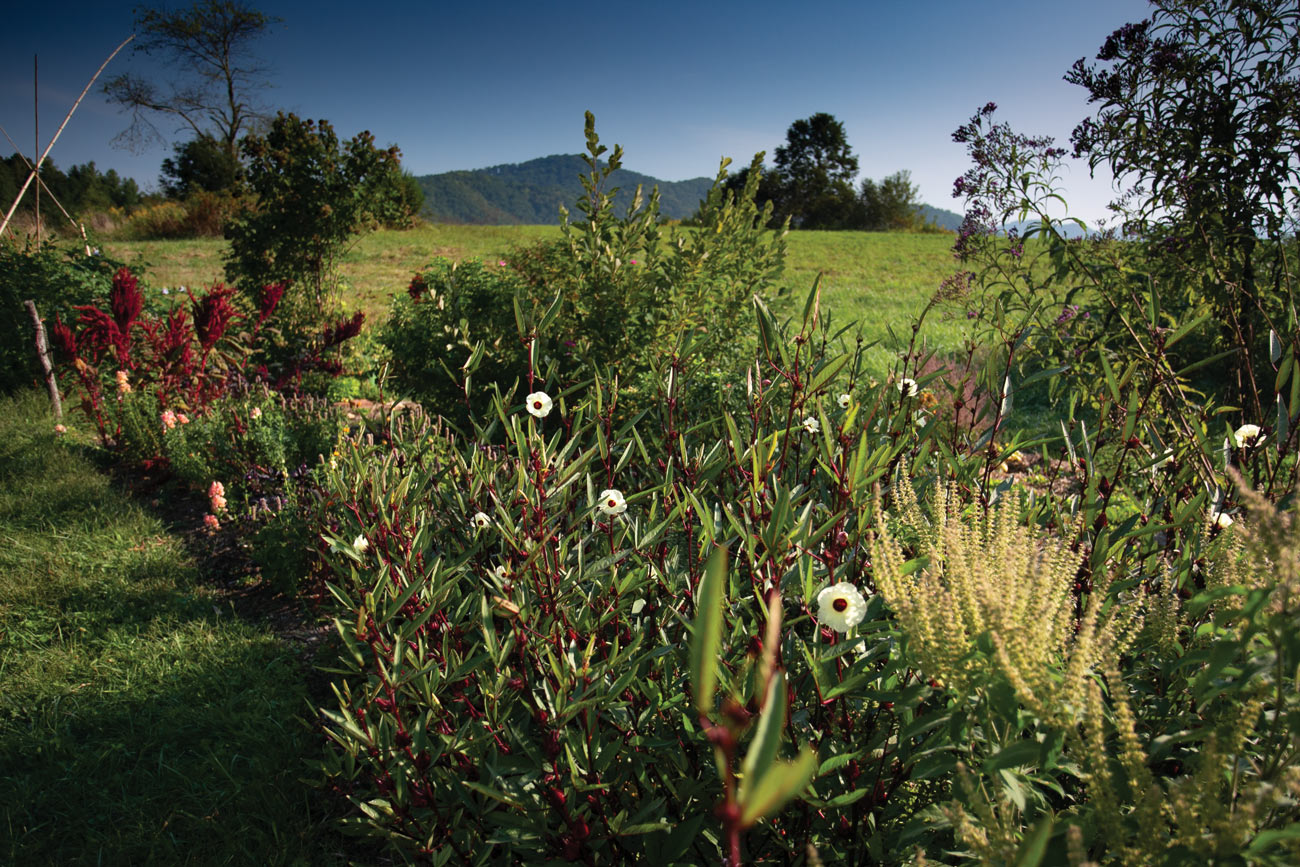
'Thai Red Roselle' (Hibiscus sabdariffa) growing in my North Carolina garden, along with spilanthes (Acmella oleracea) and tulsi (Ocimum tenuiflorum)
What Is an Herb?
An herb is a useful plant that provides one or more benefits to humans: medicine, flavoring, dye, fragrance, or ceremonial material. Depending on the species, the parts used may include the flowers, fruit, bark, roots, leaves, or seeds. Some herbs are both medicinal and edible, whereas others are primarily culinary (used to flavor food in small to modest amounts) with secondary medicinal uses, and some are solely medicinal.
In contemporary Western herbalism, an herb is generally any plant or plant part that is used for medicine. This includes classic herbaceous garden plants like peppermint (Mentha x piperita), chamomile (Matricaria recutita), and echinacea (Echinacea purpurea), but also a whole herbarium of medicinal trees, shrubs, vines, flowers, fruits, and roots.
- Medicinal trees include hawthorn (Crataegus spp.), ginkgo (Ginkgo biloba), birch (Betula spp.), black walnut (Juglans nigra), and sassafras (Sassafras albidum)
- Medicinal shrubs include elder (Sambucus nigra; S. nigra var. canadensis), rose (Rosa spp.), and vitex or chaste tree (Vitex agnus-castus)
- Herbal vines include passionflower (Passiflora incarnata), honeysuckle (Lonicera japonica), and hops (Humulus lupulus)
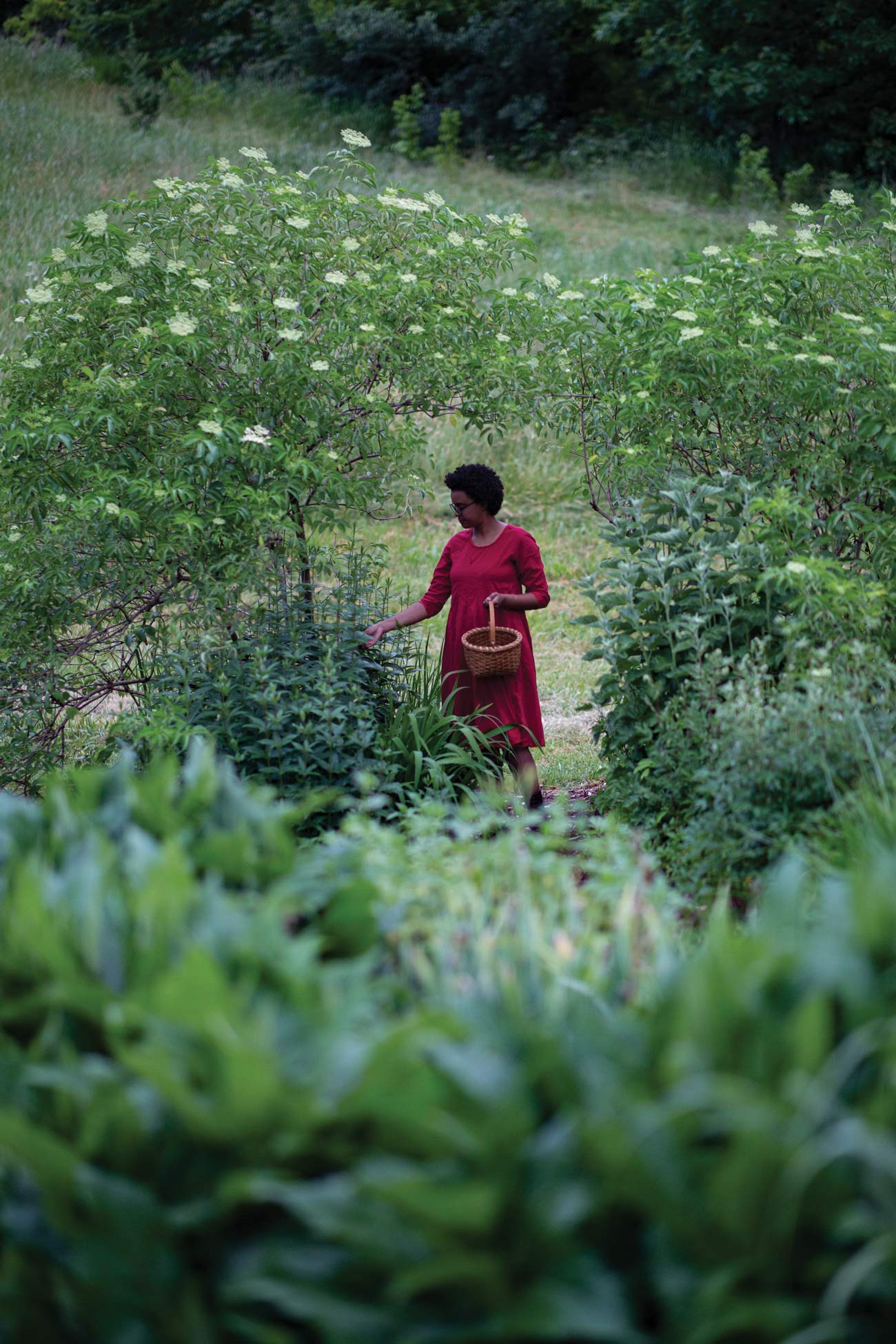
Wetland herbs (elder, marshmallow, vervain, and skullcap) are planted at the lowest point of the garden and mulched heavily to retain moisture
Why Grow Herbs?
One of the best ways to ensure our herbs are sustainable and of tip-top quality is to grow them ourselves. No other herbs will be fresher, more vital, or so infused with our own hopes for healing. When you tend a garden, you can opt to choose organic amendments, stir in your own household compost, use holistic strategies for controlling pests, and plant pollinator herbs and flowers to feed our more-than-human kin—on whose busy wings the lives of our gardens depend.
Preparing homemade remedies from organic, homegrown herbs is one way we can tread more lightly on the earth. By that token, we’re cultivating medicine for the earth as well as for ourselves. Our gardens beckon us outdoors and keep us moving, two vital foundations of happiness and wellness. Herbalism also provides a framework for gaining intimacy with our bodies and with wellness. When we grow and harvest our own medicine, the remedy is full-spectrum—it contains the intangible and unquantifiable medicine of kinship.
Ready to dive deeper into your herbal studies?
Save 20% with code MINICOURSE20
In our modern era, it’s easy to feel profoundly disconnected, not only from nature but also from our ancestors, sustenance, and medicine. The antidote to this cultural chasm is a connection to place. This connection is a web, with pulsing threads fastening you to your neighbors, garden, medicine, ancestors, and heritage, which in turn resurrects a sense of belonging—a deep knowing that you have a rightful place in the world. Imagine yourself as a bright patch of cloth, sewn into a vibrant quilt that stretches far into the past and deep into the future. Befriending living plants keeps me close to my roots, literally and figuratively. When I want to know more about a plant, I bring it into the garden. From there, we slowly begin the dance of plant–human reciprocity, a friendship of sorts, born of companionable silence throughout the seasons. We become acquainted as I weed around the plant’s roots, pick insects from its leaves, and share water with it during dry spells. This communion ultimately brings me to a deep-seated and intimate knowledge of the medicine itself.
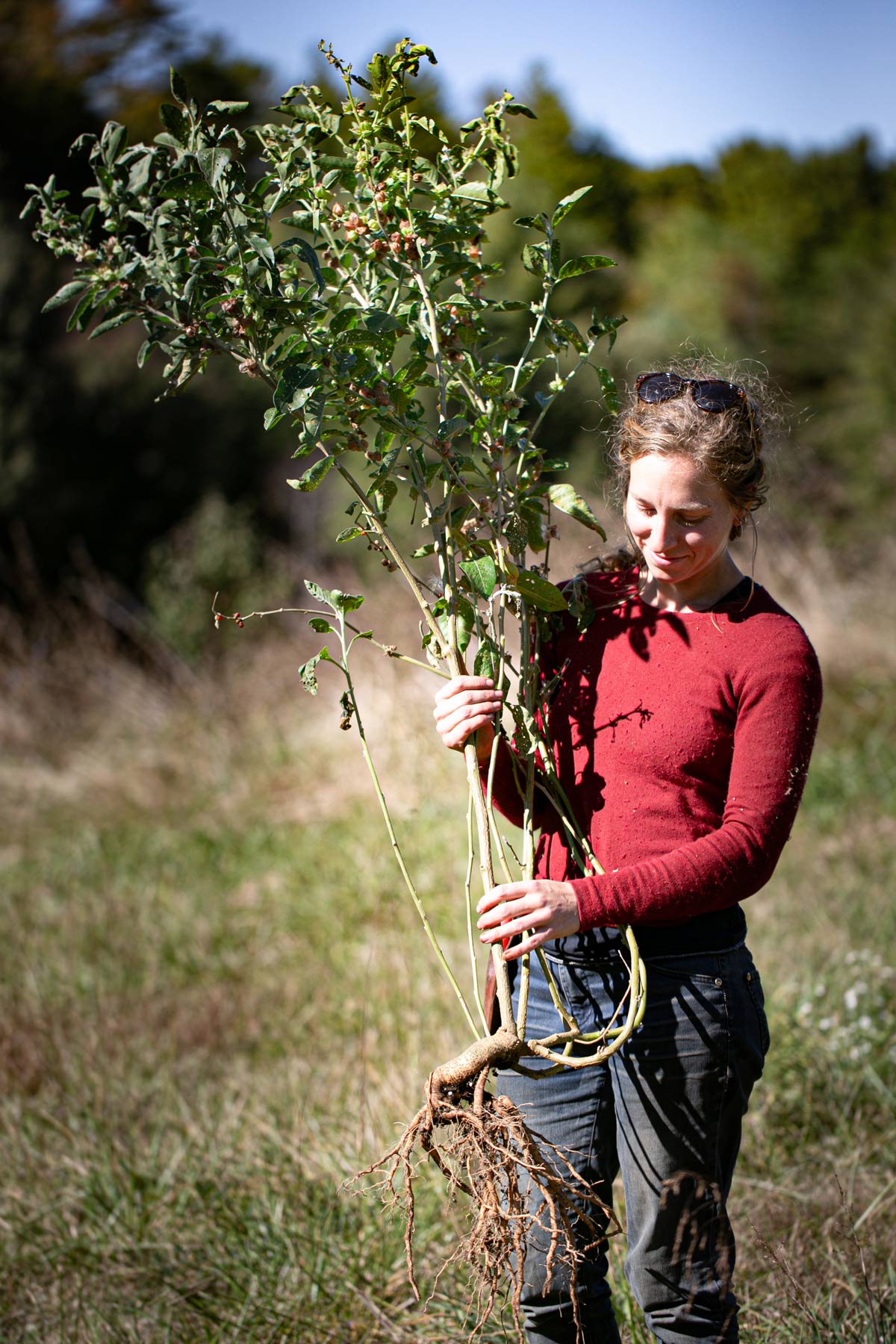
Ashwagandha (Withania somnifera) possesses a medicinal root; other parts are not medicinal
Organic Holistic Herb Gardening
My approach to holistic herb gardening mirrors my approach to holistic healing and herbalism. In holistic healing, we explore the whole individual—body, mind, temperament, home, work, diet, lifestyle, and community—and not just their disease or disorder. The holistic approach to remedying imbalances isn’t limited to herbs; it also includes strategies aimed at improving diet, sleep, lifestyle, relationships, and community. Much as whole foods are more nourishing to the body than relying on supplements alone for nutrition, nourishing and building soil is more effective in supporting plant life than counting on fertilizer alone, even if it’s organic.
You’ve heard the saying, “an ounce of prevention is worth a pound of cure.” Well, the same is true for plants. A healthy plant, one whose needs are met by the garden and gardener, is more resistant to disease and problematic insects and is more resilient to stressful conditions such as drought or extreme temperatures. Holistic herbalists look for the safest, most effective botanical remedies available. Similarly, holistic herb gardeners use environmentally sound solutions for garden problems. It is sadly ironic when medicinal herbs are grown with chemicals like herbicides, fungicides, and pesticides, which are linked to the increased incidence of cancer and the disruption of healthy hormone function. There’s something inherently wrong with poisoning the planet and our bodies to grow a plant that is meant to heal.
Much of my approach to gardening is inspired by traditional Indigenous systems of agriculture. These living, evolving sets of ideas and principles can be applied to many aspects of gardening, landscaping, building, and human relationships. Holistic gardening is built upon close observation of interconnectedness and an eye toward co-creating a vibrant and sustainable garden that considers all life, elements, and planetary and societal health.
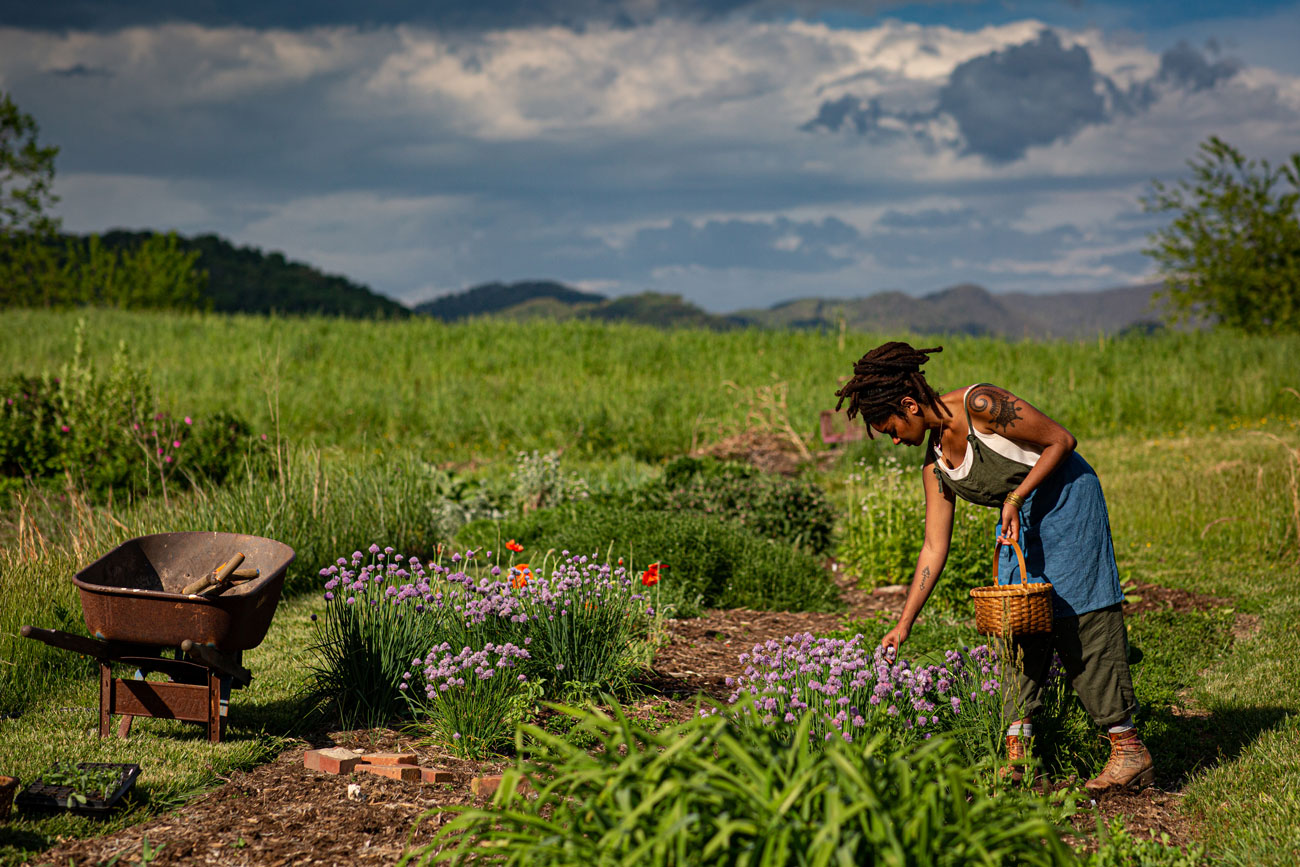
Harvesting the edible flower of chives (Allium schoenoprasum)
Core Tenets of Holistic Herb Gardening
- BUILD THE SOIL INSTEAD OF FERTILIZING PLANTS
Nourishing the soil is a long-term strategy that honors your garden’s place in the intricate web of life. Build your soil by adding copious amounts of organic matter, introducing and supporting healthy soil organisms, and growing cover crops. Foster ongoing soil fertility by mulching and reducing tillage, thus allowing soil microbes and beneficial garden animals to flourish. Building soil fertility may be more work initially, but it amounts to less work in the long run, as the plants are happier and healthier on a whole-foods diet of luscious dirt!
- GROW PLANTS THAT LOVE YOUR CLIMATE
Choose plants that are suited to your climate and you’re more likely to meet with success and a greater harvest of medicinals. It’s less work to grow herbs that don’t need a lot of inputs like irrigation and soil amending.
- PREVENTION OVER TREATMENT
Nurture plant and animal diversity in your landscape for garden and planetary health. You’ll invite a vibrant community of pollinators and beneficial insects by creating varied habitats, interplanting multiple species of herbs, and growing native flora. A balanced ecosystem encourages healthy plants by reducing disease and unchecked insect infestation.
- YOU ARE WOVEN INTO THE RICH TAPESTRY OF LIFE
Consider how your actions affect the water, soil, air, and other organisms you share this planet with. Is your garden problem worth creating a legion of issues for generations to come? Choose the simplest remedies to reduce garden pests and forgo powerful insecticides—organic and non-natural alike—that harm all neighboring insects, and not just the pest at hand. For example, instead of choosing quick measures like herbicides to control weeds, consider mulching, which keeps opportunistic plants at bay while nourishing and cooling the soil.
I’m confident that anyone can grow an herb garden and make medicine with plants that heal. It just takes the will (that part’s up to you) and a bit of know-how. I grew up in the suburbs of D.C., so I know firsthand that garden space is at a premium for lots of folks. Even if you’ve only got a tiny backyard or patio or balcony, you can grow medicinal herbs. Check out the Container Gardening Hub on my blog—it’s filled with free resources for growing an herb garden in pots.
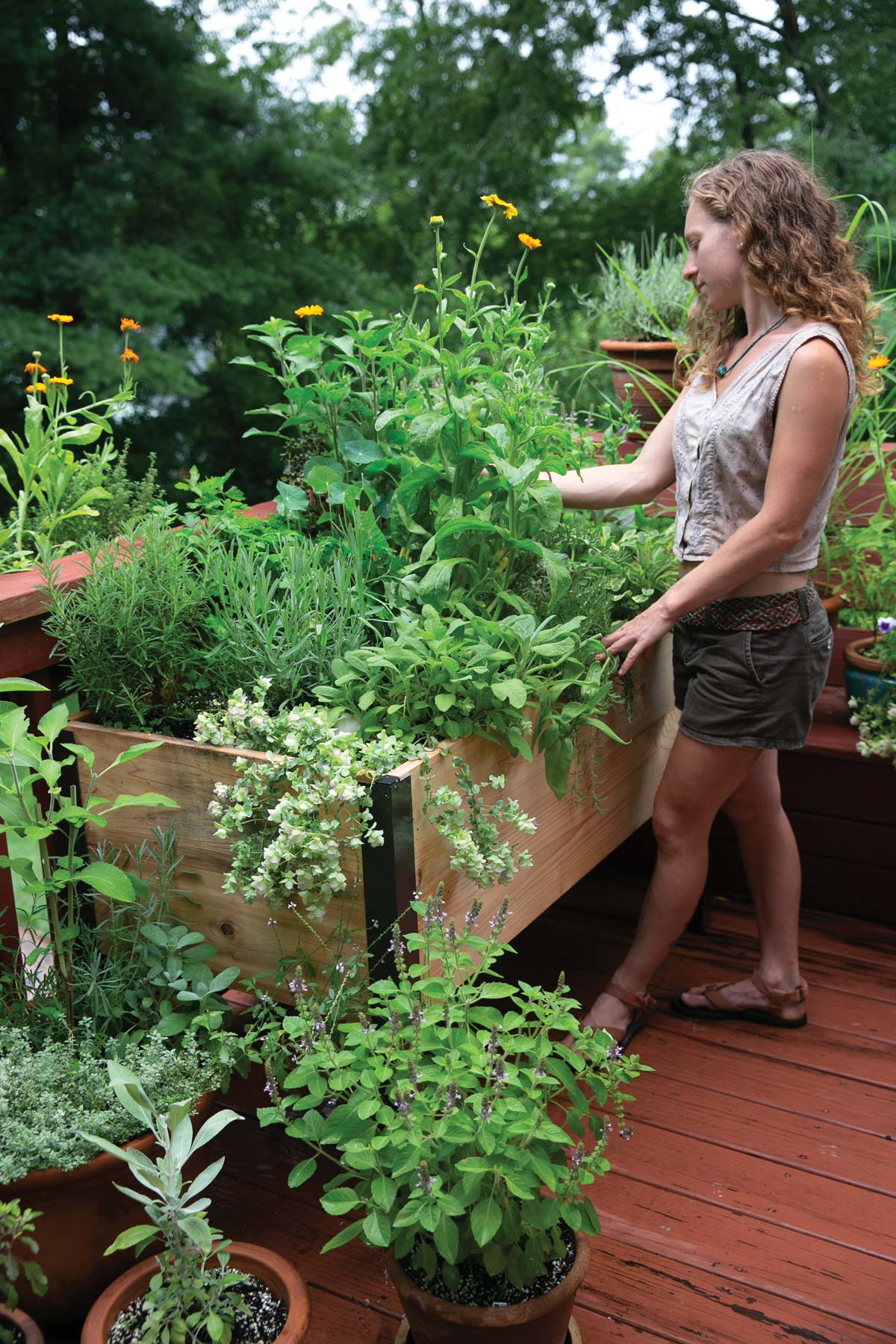
You can grow a sizable amount of medicinal plants in pots even if you don’t have a garden
All Content, Photography, and Text, ©Juliet Blankespoor unless otherwise noted. Distribution, resale, or sharing of this material is illegal and punishable by law. Please respect the hours that went into creating this resource.
Dive deeper into your herbal studies!
Enroll in one of Chestnut School’s herbalism programs today.
Course Navigation
More Resources

